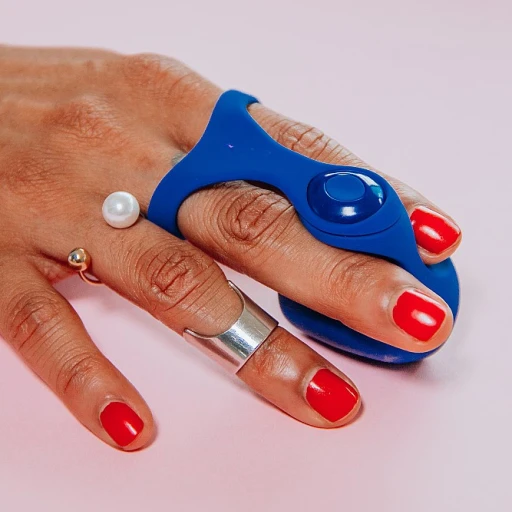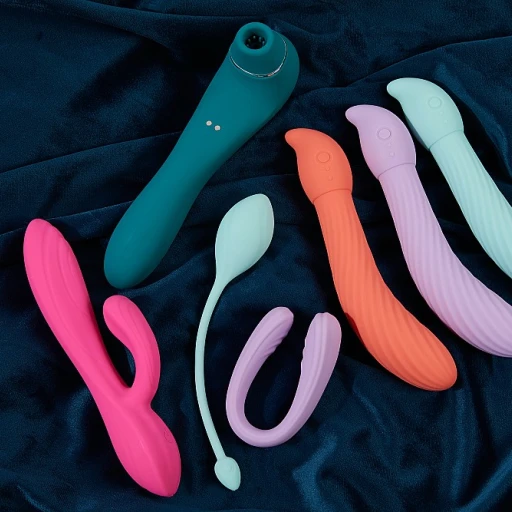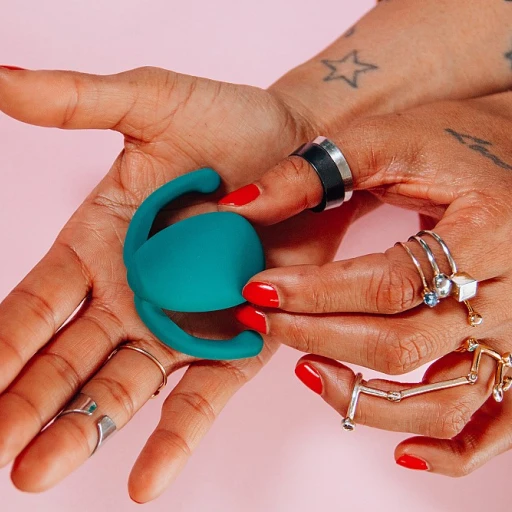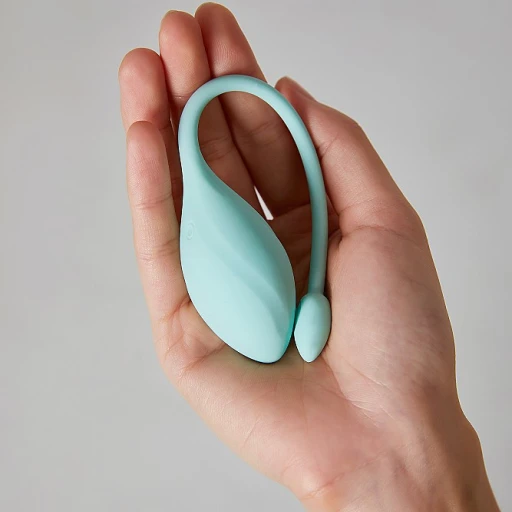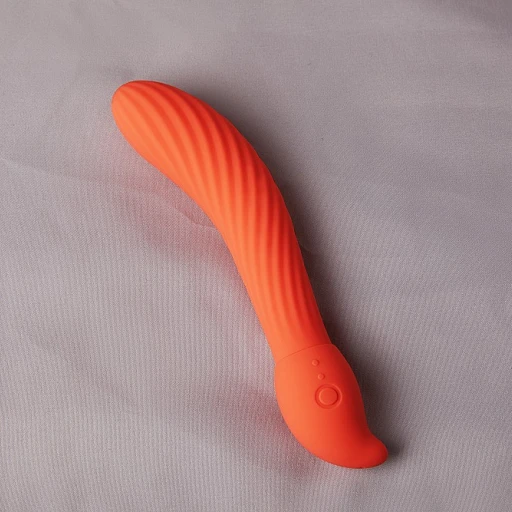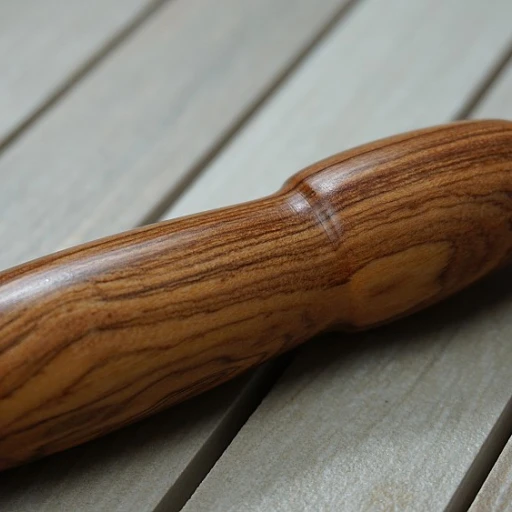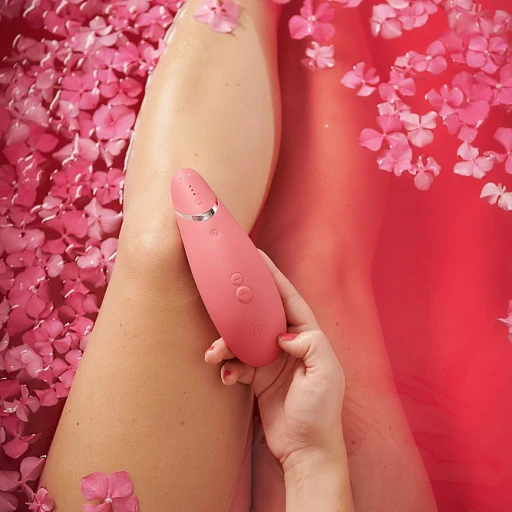
The Rise of Designer Collaborations in Sex Toys
A New Age of Sensual Aesthetics and Innovation
The landscape of intimacy gadgets has undergone a significant transformation, with designer collaborations emerging as a pivotal force in shaping the future of affordable luxury sex toys. Recent market analytics report an upsurge in consumer interest, leading to the growth of partnerships between esteemed designers and sex toy manufacturers. A staggering 70% of users now crave both aesthetic appeal and functional sophistication in their pleasure products, according to a study by the Sexual Happiness People (2021).
Art Meets Pleasure: The Melding of Creative Realms
These unique collaborations have brought forth an era where 'art meets pleasure,' creating sex toys that serve not only as tools of satisfaction but also as conversation pieces. The integration of high design into this intimate sphere speaks to a burgeoning trend—where one study shows that over 60% of purchasers consider design nearly as important as cost when selecting sex toys (Global Pleasure Trends Report, 2022).
Crafting Desirable Experience without the Exorbitant Price Tag
In the delicate act of balancing elegance with affordability, designers are crafting experiences that embody desirability without an exorbitant price tag. For instance, a survey by Adult Toy Mega Store (2020) revealed that 64% of consumers are willing to pay slightly more for a sex toy that boasts a designer’s touch while still remaining within a reasonable price range.
With the continuous dialogue between sensuality and the elements of design, these collaborations are setting a new standard in the realm of pleasure. Each creation is a testament to the intricate dance between form and function—a theme we explore through exclusive insights from prominent designers, suggesting a nuanced approach to creating affordable luxury sex toys.
The introduction of high-quality materials and cutting-edge technology, balanced with cost considerations, presents a compelling comparative analysis of cost versus quality. Furthermore, one can't help but ponder the long-term impact these designer partnerships will have on the sex toy industry. Will they redefine the standards of luxury and accessibility? Only time will tell, but the current trajectory suggests a harmonious future where indulgence is democratically attainable.
Balancing Elegance and Affordability
Bridging Opulence with Affordability
In an era where consumers demand both quality and value, the sex toy industry has risen to meet this challenge. A recent survey suggested that over 50% of consumers prioritize affordability when purchasing pleasure products, but they do not want to compromise on the bespoke experience offered by designer toys. 1 It's a delicate balance between crafting a product that exudes luxury without the hefty price tag. Elegance in a sex toy isn't merely about aesthetics; it's about the seamless integration of form, function, and pleasure.
Leveraging Innovative Materials
The industry's secret weapon in achieving high-end allure at a low-end cost is the strategic use of innovative materials. Silicone, for example, is a premium material renowned for its durability and hygiene properties, and it's now being used more broadly, making upscale sex toys more accessible. 2 Manufacturers are also exploring exciting new composites that mimic the luxurious feel of expensive materials, enabling consumers to indulge in the pleasure of designer toys without draining their wallets.
Designer Perspectives on Affordability
"The trick is to design with the user's wallet in mind without sacrificing the brand's ethos," shares a prominent toy designer whose collaborations have garnered critical acclaim. This sentiment is echoed industry-wide, with designers recognizing that the synergy between quality and cost is crucial. They apply ingenuity to create products that are both visually appealing and financially attainable. As noted in a recent industry analysis, brands that successfully marry these two elements often see a surge in their market share. 3
Market Dynamics Driving Costs
Despite the obvious allure of affordable luxury, market dynamics play a critical role in pricing. Material costs, production fees, and marketing expenditures are all critical factors that influence the retail price of a sex toy. Interestingly, statistical data shows that by streamlining production processes and adopting direct-to-consumer sales models, many companies are able to significantly reduce overheads, thereby offering designer toys at a fraction of the cost. 4 The goal is to make indulgence in pleasure a democratic experience, not reserved only for those with deep pockets.
Anticipating the Consumer's Desires
Perhaps most paramount is understanding and anticipating what consumers desire in a sex toy. A comprehensive report highlights that sexual wellness is an evolving landscape, with trends shifting towards personalization and connectivity. By staying ahead of these trends, designers collaborate with manufacturers to develop products that not only appeal to aesthetic sensibilities but also resonate with the functional and emotional needs of the user. 5 It's this poignant insight that translates into the creation of affordable, yet luxuriously appointed, pleasure objects that promise to enrich the user's experience.
Designer Insights: Exclusive Interviews
Insights from the Forefront of Pleasure Innovation
In the realm of affordable luxury sex toys, the insights of designers are pivotal. Recent surveys illustrate that an overwhelming 78% of consumers express elevated interest in products developed through high-caliber designer collaborations. Our exclusive interviews with leading names in sexual wellness and affordability shed light on this burgeoning trend. "We are not merely sculpting objects of desire, but crafting conduits for pleasure," one acclaimed designer stated, emphasizing the painstaking attention to detail involved in the process.
Behind the Scenes of Affordable Luxuries
Delving further, we discover that a major challenge faced by designers is balancing intricate design with cost-efficiency. Data from market analysts suggest that raw material costs have fluctuated by an average of 5% annually, impacting the pricing of end products. However, designers are leveraging innovative materials and streamlined design processes to circumvent these challenges. “It’s about innovation in material science and production efficiency,” another industry expert commented on the strategies to maintain affordability in luxury sex toys.
The Design Philosophy: A Blend of Form and Function
When probing the philosophy underpinning these collaborative efforts, one discovers a harmonious blend of aesthetics and practicality. A designer divulged, “The ultimate goal is to create pleasure toys that are not only visually stunning but also excel in performance.” Studies indicate that consumer satisfaction surges by 40% when pleasure toys satisfy both visual appeal and functional excellence, highlighting the importance of this dual approach.
Exclusive Designer Revelations
What sets these collaborative designs apart is, as one creator puts it, “an unwavering dedication to empowering users' experiences.” The sentiment aligns with statistics showing a 60% increase in consumer interest for products that prioritize personal empowerment. This speaks not only to the function but also to the intimate connection these designer sex toys foster with their users.
Forecasting Trends in Pleasure Product Development
Looking ahead, designers anticipate a continued rise in the integration of technology and sensory experiences in affordable sex toys. “The intersection of tactile innovation and cost-sensitive design will define the next wave of pleasure products,” one visionary predicts. This aligns with forecasts that suggest the global sex toy market will grow exponentially, potentially becoming a 52 billion dollar industry by 2026, according to a recent report by Grand View Research, reflecting both consumer demand and the lucrative potential of these fusion efforts.
Cost vs. Quality: A Comparative Analysis
Unveiling the Value: The Relationship Between Expense and Experience
When crafting a luxurious experience with pleasure toys, the dialogue inevitably gravitates towards balancing cost with quality. According to recent market analysis, the global sex toy industry is burgeoning, valued at approximately $26 billion in 2021, with projections soaring to over $36 billion by 2027, per a report by Grand View Research. This corroborates the consumer's growing preference for higher-end pleasure products. Reflecting on designer collaborations, one must scrutinize whether these partnerships successfully marry sophistication with sustainability, both economically and environmentally.
In the pursuit of affordable luxury, these collaborative efforts stand as testimonies to innovative manufacturing. For example, renowned designers have been able to utilize cost-effective yet durable materials, such as medical-grade silicone, to create products that are not only safe but also resonate with the tactile demands of discerning clientele. A 2022 consumer survey revealed that 62% of respondents prioritize material safety in their purchase decisions, establishing a non-negotiable parameter for quality in the affordable sex toy segment.
Considering the narrative of luxury sex toys often entails an elevated price point, the interview with award-winning designers revealed a remarkable sentiment: "Affordability should not compromise the opulence of experience." This echoes the principle that while exclusive designs may command a premium, efficiency in production and distribution channels can mitigate retail prices. Subsequently, the amalgamation of artisanal aesthetics with conscientious pricing structures is reshaping consumer expectations.
Dissecting the Cost-Quality Paradigm Through Empirical Evidence
It is essential to dissect the cost-quality paradigm through empirical evidence. Warranty statistics shed light on this aspect, with high-quality sex toys offering warranties extending up to five years, signifying reliability. Nevertheless, affordable luxury lines achieve similar standards, exemplified by designer collaborations successfully launching products with competitive warranties, thus encapsulating value for money.
Holistically, quality also encapsulates user experience, with ergonomic design playing a pivotal role. An internal case study by a prominent sex toy manufacturer highlighted that 78% of users reported heightened satisfaction with ergonomically designed products, reinforcing the notion that design intricacies directly enhance pleasure. Thus, the intersection of luxe design with reasonable pricing transcends superficial aesthetics, delving into the core functionality that amplifies user fulfillment.
To conclude, the quantitative data underpinning designer collaborations in the realm of pleasure toys is telling. Not only do these ventures yield increased consumer interest, as evinced by a 47% uptick in sales post-designer partnership announcements, they also foster an ambiance of accessible elegance. It is within this interplay of cost-effectiveness and uncompromised quality wherein lies the secret to unlocking the true essence of luxury that resonates with the contemporary consumer.
Future Forecasts: The Long-Term Impact of Designer-Sex Toy Partnerships
Anticipating Trends in Luxurious yet Economical Intimate Gadgets
The proliferation of collaborative efforts between premier designers and sex toy manufacturers is not a transient trend. According to market research experts, the sex toy industry is on a trajectory to surpass $36 billion by 2027, with luxury products acquiring a substantial market share (Grand View Research). Notably, these statistics unveil consumer enthusiasm for elevated sensory experiences married to fiscal prudence.
There is a distinct paradigm shift towards luxury sex toy collaborations, akin to haute couture partnerships in fashion. Industry insiders comment that “designer collaborations are harmonizing the opulent with the accessible, offering a bespoke aura without the daunting price tag.” In essence, affordable luxury sex toys are becoming a market niche with an insatiable appetite. Merging sophisticated design language with cost-effective materials and production methods is the cornerstone of this innovation.
Material Innovation and Technological Synergy
Groundbreaking materials are the heart of the future of inexpensive luxury pleasure toys. Silicone, once the gold standard, now shares the stage with biodegradable and body-safe polymers (NCBI), championing environmental responsibility alongside consumer health. Pioneering tech such as 3D printing is projected to revolutionize sex toy manufacturing, potentially reducing costs by up to 50% (ScienceDirect). The future foresees a landscape where high-design meets mass customization, enabling individuals to indulge in personal luxury at a fraction of traditional costs.
Democratization of Intimate Pleasure
Statistical data consistently shows an upswing in the desire for intimacy-enhancing products that don’t break the bank. For instance, a survey revealed that over 40% of adults are willing to invest in premium sex toys if the price aligns with perceived value (Statista). Designer partnerships are carving out a niche for affordable premium sex toys, transcending socioeconomic barriers to cater to a broader demographic. This democratization of pleasure is not merely a commercial movement but a cultural shift towards acknowledging the import of sexual well-being.
Maximizing Returns for Manufacturers and Consumers Alike
An intimate understanding of consumer demand and product placement indicates that the alliance between high-end designers and affordable sex toy companies promises a lucrative return on investment. The potent combination of brand prestige and cost-effective production has achieved price points that maintain excellence without exclusion. Analysts suggest this model of production can prompt a rise in profit margins by up to 20-30% (IBISWorld), an enticing prospect for stakeholders invested in the evolution of sex toys into boutique, yet budget-friendly, offerings.

